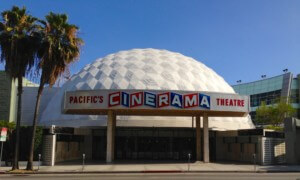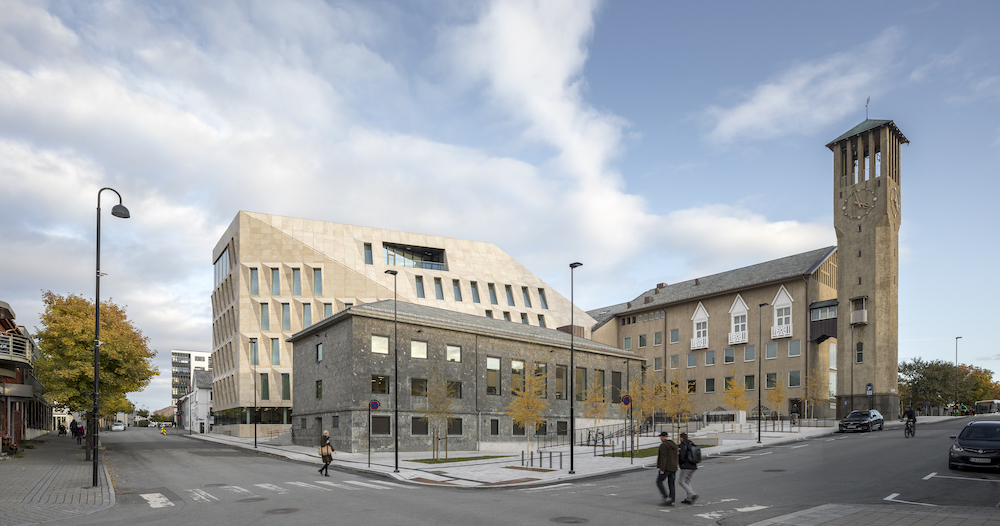Richmond, Virginia, has always been a cultured town, but for years it lacked a purpose-built base for contemporary art. And then, in 2018, one appeared on the corner of West Broad Street in the Fan District. The building, designed by Steven Holl Architects (SHA) for Virginia Commonwealth University (VCU), marshaled frosted glass and sky-blue zinc into a willful composition of lozenges, bars, and torqued planes. Holl described this collision of forms in the verbal tracery we’ve come to expect from him. Evidently, the converging volumes epitomized Bergsonian ideas about time, with partial recourse to Einsteinian (or at least non-Euclidian) geometry. Of course.
A more obvious referent was the traffic junction out front, where two of the city’s major thoroughfares, West Broad and North Belvidere Street, bisect. They lend the walkable terrain around the Institute for Contemporary Art (ICA) at VCU an undeniable, if environmentally noxious, charge. For a form-inclined architect, it’s an enticement.
Across town in the East End, another object building in suspiciously Hollian guise—The Kitchens at Reynolds—has appeared on the scene. Evidence of a connection abounds, starting with the layout of the 50,000-square-foot development. Two wings, linked by daylit corridors with slidable doors, cradle a courtyard further bounded by a working greenhouse. The splayed plan is in part a response to a node in the local traffic network, a seemingly minor interchange (from the ground, at any rate) invested with a significance more conducive to the purposes of icon making.
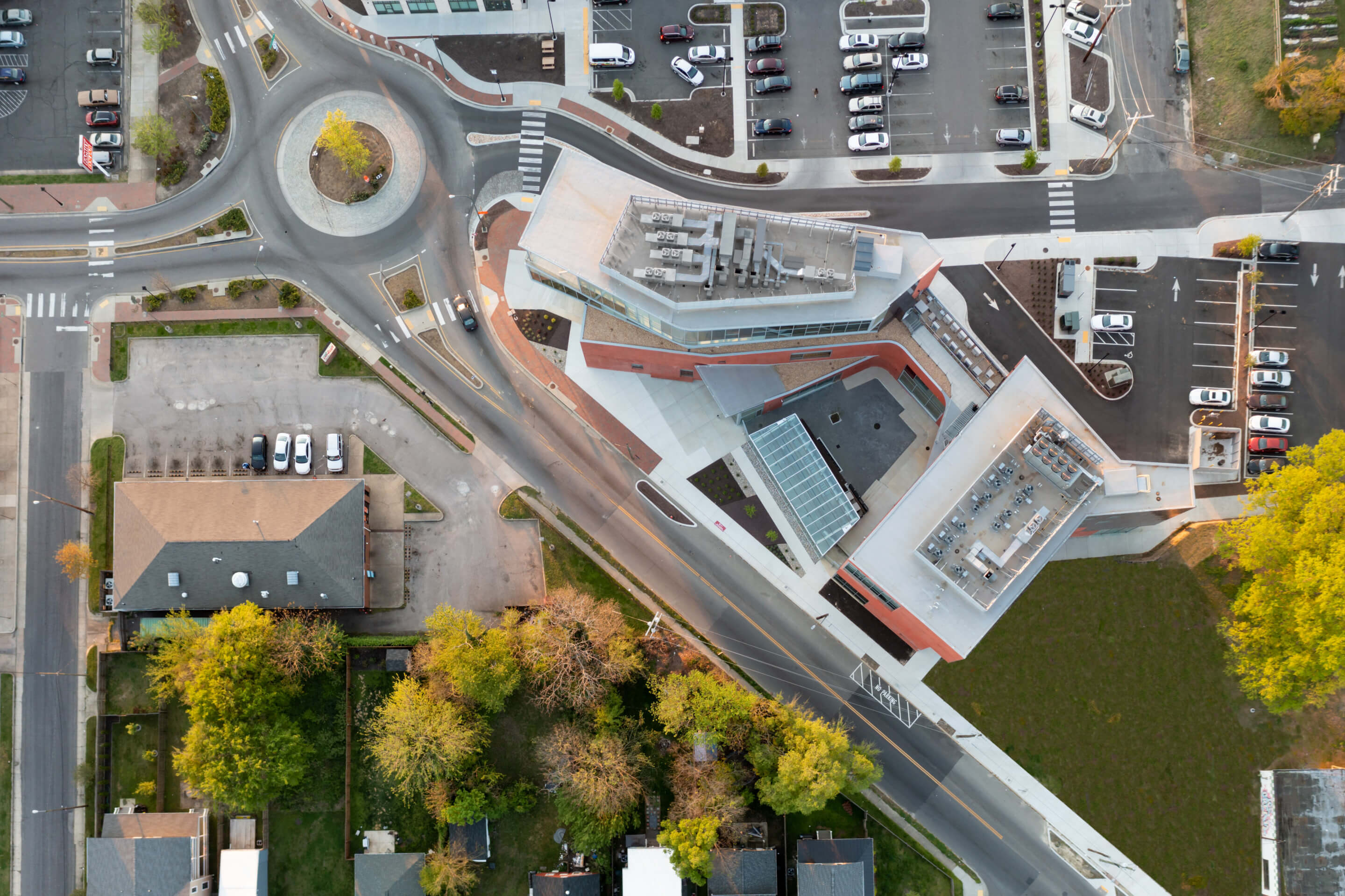
These are hallmark signs of Holl’s practice. There are more. Mischievously, the unspooled building presents a different face at every turn. Square windows appear to be haphazardly punched into structural concrete walls, tinged red and textured to resemble residential brick courses. This sturdy base slackens in places, as at the webbed corners of the court or the supplely formed benches that peel off from the facade. Plate glass optimistically inches down toward the sidewalk pavement. Up above, divergences in the massing signal a material change from concrete to glazing or copper sheeting. A penthouse volume slides off its pedestal to cantilever over the main entrance.
But The Kitchens at Reynolds is not a Steven Holl building. It was, in fact, designed by Holl’s faithful aide-de-camp Chris McVoy with collaborator Beth O’Neill. McVoy was integral to the ICA’s realization, as he was to the build-out of the Nelson-Atkins Museum of Art in Kansas City and so many others. As an SHA partner, he has presided over triumphs and middling points. In the past decade, he began branching out on his own. He and O’Neill, a seasoned architect who also teaches at the Pratt Institute in Brooklyn, linked up in 2012, with the latter taking the reins. McVoy chipped in during his off-hours.
But the Richmond project, and a commission from the Bronx Children’s Museum, shifted the balance for him. “Until recently, I was 100 percent with Steven, 30 percent working with Beth. I was working nonstop,” McVoy told AN. “That changed in the last year—I’m now 30 percent with Steven and 100 percent with Beth.”
Holl was approached by the philanthropist couple Steve and Kathie Markel, major donors to the ICA, about the East End job. He passed, but recommended O’Neill McVoy Architects. The brief came later after extensive community engagement revealed more than a few priorities.
The predominantly Black neighborhood of Church Hill North is, in benign sociological terms, “underserved.” It lacks the everyday infrastructure (for instance, access to fresh food) that seamlessly accrues to wealthier hubs. North 25th Street is jarring proof of this. Up by the Reynolds interchange, the street conforms to the vision of desolate downtowns forever waiting to be “revitalized.” Cruise southward, in the direction of the historically preserved Church Hill neighborhood, and the street undergoes a transformation. There are more trees and less hardscape. The air is cooler, less saturated with desperation. All the well-reviewed restaurants and corner-store throwbacks are abuzz with chatter.
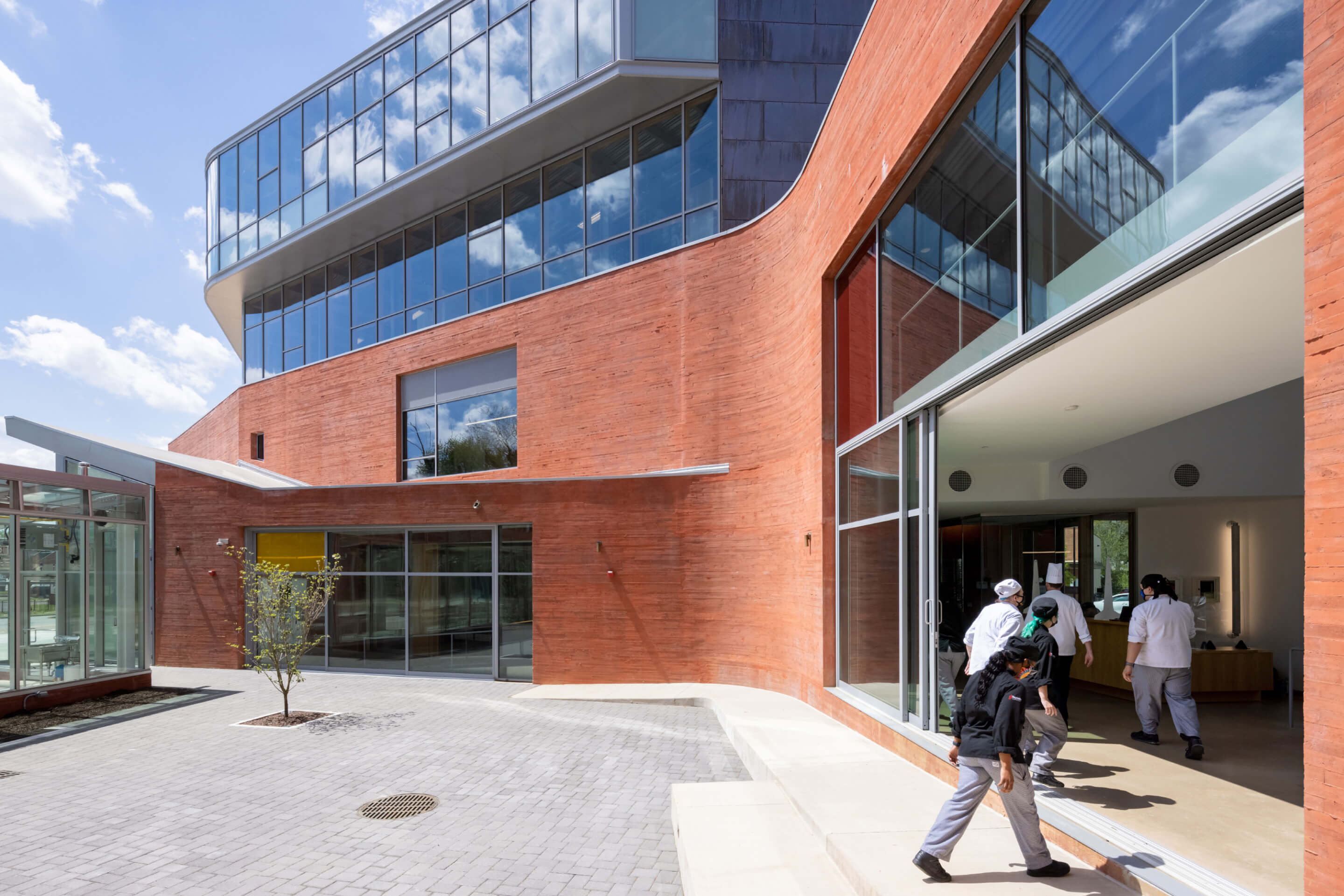
The city is slowly alleviating some of Church Hill’s ailments. In late 2020, the first phase of the Armstrong Renaissance project opened, unlocking a fraction of the expected 256 affordable units that will eventually be made available. Incentives are in place to encourage more housing construction. Corporations and philanthropists like the Markels have also become active in the area. Next door to The Kitchens at Reynolds, the pair launched a new health food store to address the neighborhood’s dietary troubles.
Among the conclusions unearthed by the community outreach process—McVoy likened it to a “neighborhood charrette”—was the need for localized economic stimulus. The Markels approached prospective tenants to anchor a large development, in particular the culinary program at Reynolds Community College. It was soon discovered that nearly a third of enrolled students already lived in Church Hill, and receiving favorable terms, the college committed to the site.
Reynolds occupies approximately half of the building area. But for the demonstration theater and a few classrooms on level 2, the core culinary functions are all located at grade. Four teaching kitchens are positioned around the courtyard, which, thanks to those sliding glass doors, is likely to become a venue for private parties. The transparent vegetable shed along Nine Mile Road is meant to attract interest. A small cafe and the shallow, measured steps that lead to it indicate a natural entry point to the campus.
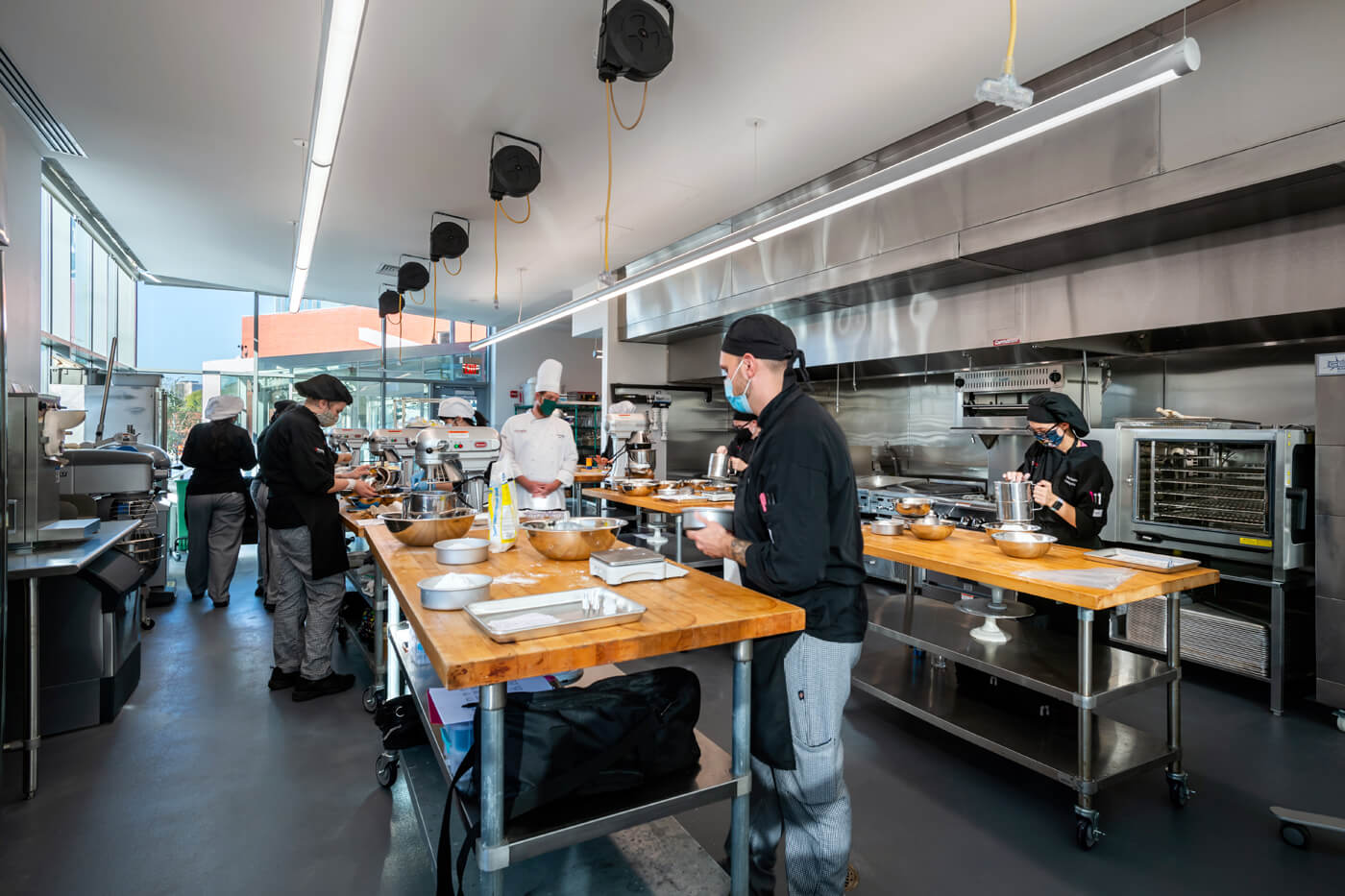
The double-height glazed boxes on levels 3 and 4 of the west wing are graded for restaurants, though the spaces have yet to be leased. The east wing, meanwhile, offers 12 affordable apartments. A fairly unimpressive number, but O’Neill and McVoy hope for more. Indeed, they’ve already drawn up plans for an additional two wings. “We’re architects,” said O’Neill, “so after being asked to design one building, we of course came back with a site master plan.”
Without imposing itself on the neighborhood, The Kitchens at Reynolds has somewhat more mass than its architects’ conceptualizing admits. Though development in the surrounding area is picking up, much of it is low-rise, the result being that the Reynolds campus is unlikely to be challenged for bulk or height anytime soon. It makes a statement about what its architects call “urban form,” only to indicate the limits of that descriptor. As a discipline, urban design has outgrown the Lynchian categorical repertoire of paths, edges, nodes, etc. The notion that landmarks aren’t simply the by-products of rehearsed interactions and synced-up sightlines is by now tacitly accepted by designers. That they are no substitutes for reparative economic investment is just the rote truth.
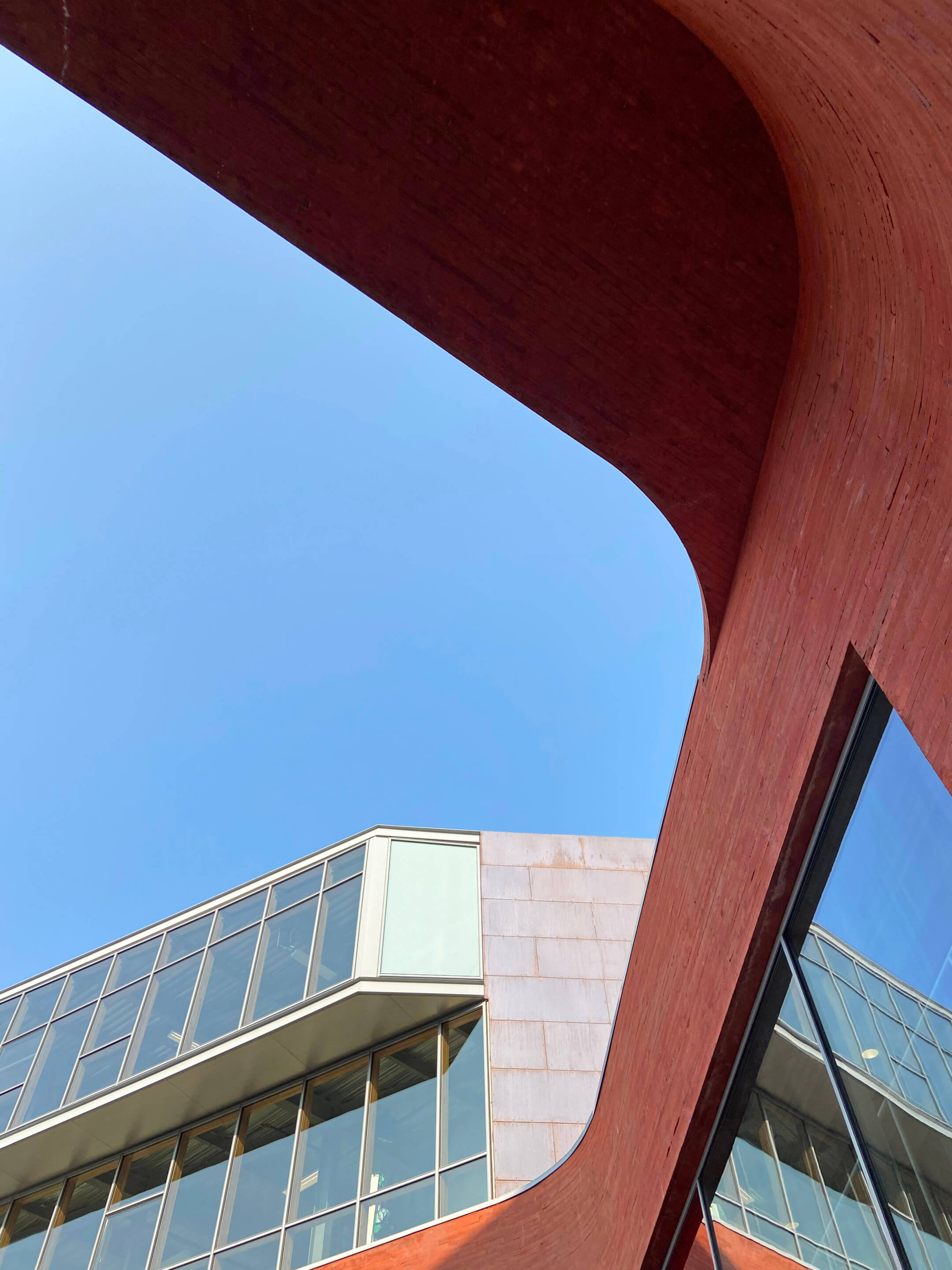
At the same time, the Church Hill project is anticipatory, which is another way of saying hopeful. It’s obvious that O’Neill and McVoy have thought long and hard about the consequences of their work. Lecturing about the building, they like to show a slide of simple prompts that guided their efforts. These self-inquiries are wide-ranging. “How to transform this important crossroads site as catalyst for a positive future,” reads an early prompt under the heading “Past/Future.” Another listed under “Program” asks: “How to infuse all spaces with natural light?”
That they mostly accomplished their high-order directives could be cynically chalked up to stage-managing. But the physical evidence doesn’t lie: O’Neill and McVoy have delivered a building of considerable substance that manages to do a lot in a far more challenging context than the VCU gallery. Will it be a catalyst? Here architectural terminology does us a disservice. We speak of “wings” while neglecting the limits of uplift.
Design architect: O’Neill McVoy Architects
Architect of record: Quinn Evans
Location: Richmond, Virginia
General contractor: Hourigan
Structural engineering: Silman
Civil and landscape engineering: Timmons
MEPF: Valley Engineering









